Growing Lovely Nasturtium Flowers - Care Guide, Varieties, Problems
Nasturtium is a plant known to humanity since the ancient times. Interestingly enough, back then it was not only used as a decoration, but also valued for its pro-health benefits. Currently, many nasturtium varieties grow across the entire globe, and each looks slightly different. Check how to grow and take care of this plant. Learn how to use nasturtiums in the kitchen.
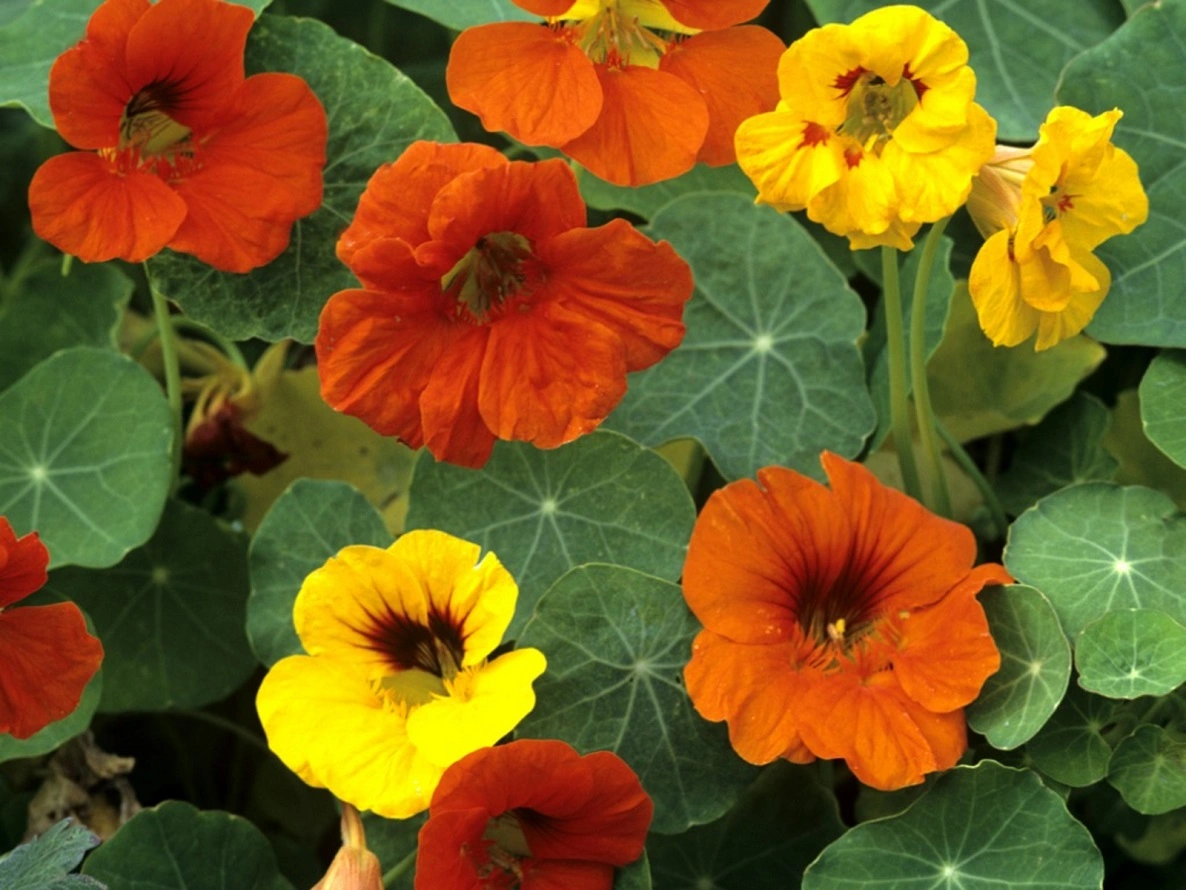
Nasturtium – what kind of flower is it?
Nasturtium (Tropaeolum) is a trailing annual plant. It’s popular all over the world – mostly because of its long and interesting history. In its natural habitat, nasturtium appeared in the South America. It was quickly brought to Europe and appeared in many other parts of the world.
What does nasturtium look like?
Nasturtium is a trailing plant, which means it has characteristic long stems. Depending on the variety, some plants develop even 4-meter long vines. In addition, the species has distinct small, round, light green leaves.
As for the flowers, orange ones are the most popular. But nasturtium can have other colors as well. In addition to orange, one can also find nasturtium in the following shades:
- yellow,
- red.
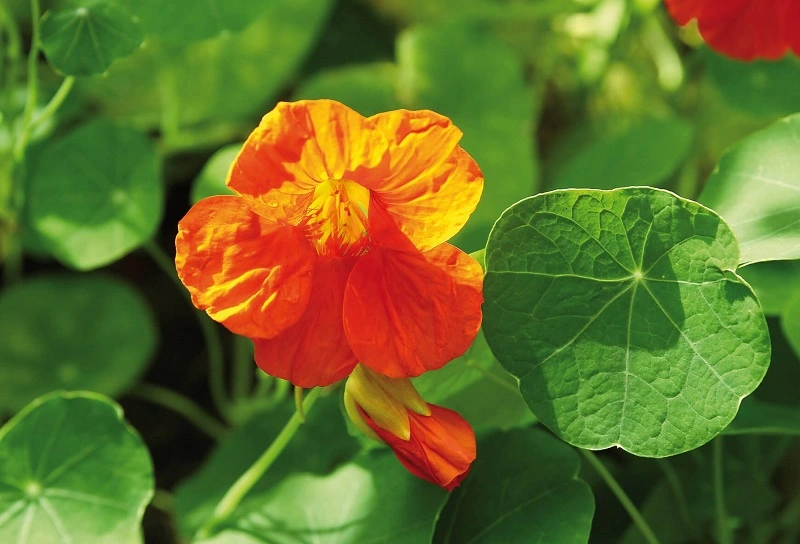
Nasturtium varieties
It is estimated that there are about 90-100 different varieties of nasturtiums in the world. Some are definitely more popular than others. Here are some examples:
- dwarf nasturtium,
- garden nasturtium,
- three-colored nasturtium,
- canary nasturtium,
- blue nasturtium.
Nasturtium – care and needs
Nasturtium is not difficult to grow, although it requires certain conditions for proper development and blooming. A good location is essential. It has to be warm, sunny, and shielded from intense wind blows. Soil for nasturtiums doesn’t have to be very rich, but it should be loose.
Nasturtium can grow perfectly well without extra fertilizers, although it’s not forbidden to feed it. As stressed by experts, it’s good to fertilize the plant during its blooming period. It refers both to plants growing in gardens and on balconies.
Pruning is another important issue. Because it’s a trailing plant, it’s a crucial element of its care. Trimming before blooming might strengthen the intensity of flowering.
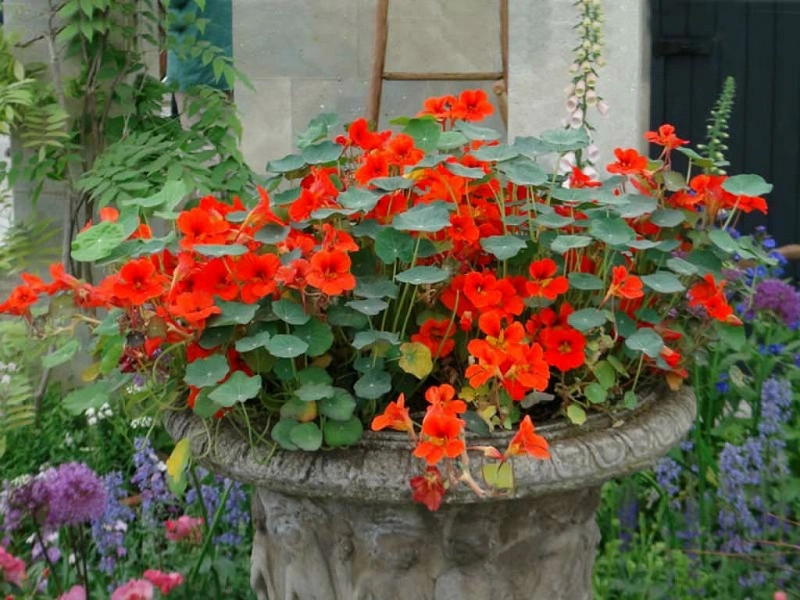
Nasturtium seeds – when to sow them?
Nasturtium is a plant sown in spring. The end of April is the best time for planting nasturtium seeds. But a lot depends on the weather conditions. If low temperatures or frost still occur, it’s good to wait until the beginning of May. It’s important especially when planting these flowers in garden flowerbeds.
You can plant nasturtiums earlier if they are going to grow in containers – they can be taken inside during colder days.
When do nasturtiums bloom?
The blooming season of nasturtiums depends mostly on weather conditions. Most varieties bloom in summer – in July. The flowers remain until the end of August. If the temperatures are higher, the plant might begin blooming earlier.
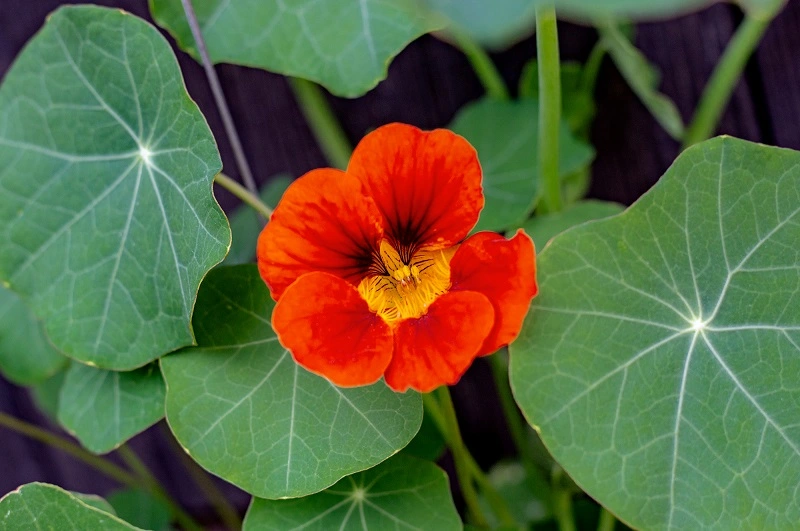
Is nasturtium edible? Benefits of the plant
Nasturtium is valued not only as a decoration. The plant has many medicinal properties. The essential oils it contains are the most used ingredients. They offer the following features:
- antibacterial,
- antifungal,
- anti-inflammatory.
Thanks to this, nasturtium extract is a great remedy for acne blemishes. It also speeds up healing of various infections and wounds.
Interestingly enough, nasturtiums are edible and can be used in the kitchen. They are a popular addition to desserts and salads. The plant has a mild taste and perfectly emphasizes various dishes. Some people use it as an ingredient of various liqueurs.
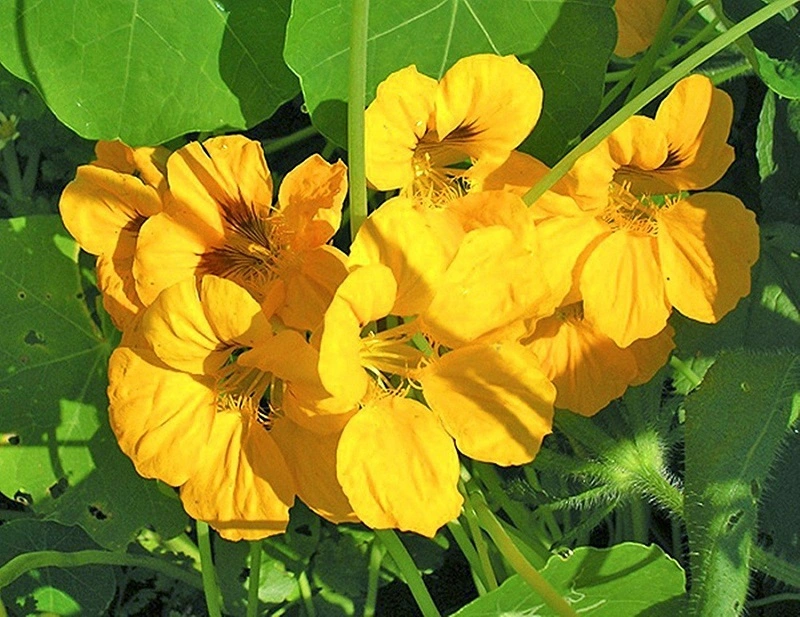
Is nasturtium poisonous?
Nasturtiums aren’t poisonous to humans. What’s more, regular consumption of these plants might improve the functioning of the urinary tract. Products with nasturtium extract are great for skin issues. One has to be careful, though, as some nasturtium varieties might be harmful to animals.
Nasturtium – what might harm the plant?
Nasturtium is generally resistant to various diseases. Pests are the biggest threat to it. The most harmful ones include:
- caterpillars,
- aphids,
- slugs,
- spider mites.
If you notice a problem, make sure to react immediately and use an adequate remedy – natural or chemical.
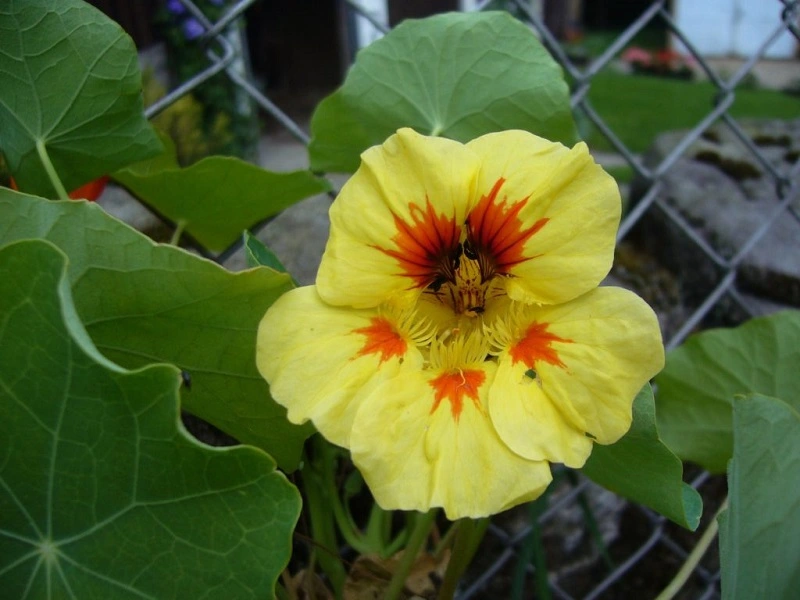
📍 How long do nasturtiums take to grow?
Nasturtiums don't need a lot of time to grow. After planting the seeds in the ground, they usually grow after 12-20 days, depending on the conditions they are provided with.
📍 Why isn't my nasturtium blooming?
There are a few possible reasons for why nasturtiums won't bloom. Picking a poor location and planting the flowers in shade are the typical cause. An overwatered soil or too many nutrients might also affect nasturtium's blooming process.
📍 When to plant nasturtiums?
Nasturtiums like warmth, so make sure not to plant them too early. The end of April or the beginning of May is the best time – depending on the temperatures.
📍 Where to plant nasturtiums?
Nasturtiums should be planted in a sunny location that is shielded from the wind. Flowerbeds with something for the vines to lean on are the best option. You can also plant nasturtiums in containers and place them on a balcony or a patio.
Featured articles




